Completed research projects
When it rains it pours: biogeophysical drivers and societal responses to compound natural hazard events in Sweden
Climate change increases the risk of extreme natural hazard events, such as wildfires, extreme precipitation events and floods. Society is generally well prepared to effectively respond to single natural hazard events, but less is known about the ability to cope with compound natural hazard events, that is, several events occurring simultaneously or sequentially. This project aims to: (i) develop an integrated map of natural hazard events in Sweden, (ii) explore causal chains of compound events, and assess social vulnerabilities in exposed areas, and (iii) assess collective capacities to achieve effective collaboration in planning and response to mitigate the effects of these compound events.
- Duration of the project: 2021-2023
- Funding: 3.4 Million SEK (The Kamprad Family Foundation for Entrepreneurship, Research & Charity)
- People involved: Johanna Mård (PI, UU), Daniel Nohrstedt (UU), Örjan Bodin (SRC)
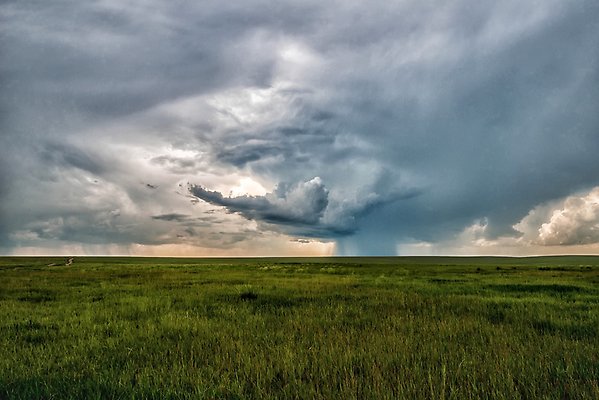
Development of risk assessment methods for cloudburst images
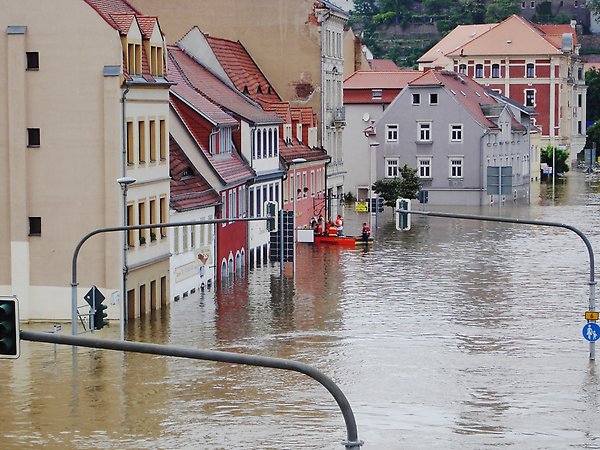
In the field of disaster risk management, risks are often seen as a combination of hazard and vulnerabilities. Applied on cloudbursts, the hazard is represented by rainfall amount, its intensity and the resulting water level, while the vulnerability is determined by the assets in the area affected by the cloudburst, such as buildings and infrastructure. Geographical factors such as the shape of the terrain play a role because the topography determines where and how fast the water flows. Prior research on rainfall damages in Sweden mainly focused on the hazard but in this project the vulnerabilities of the built environment will be in focus.
The proposed project aims to develop methods for assessment of damages and costs caused by cloudbursts in Sweden and its results can be used as support in decision-making processes on risk reducing and climate adaptation measures.
- Duration of the project: 2021-2023
- Funding: 3 M SEK (Formas)
- People involved: Lars Nyberg, Barbara Blumenthal, Tonje Grahn, Jan Haas, Konstantinos Karagiorgos, Kristin Gustafsson (KaU)
Method for prioritizing and assessing the benefits of climate adaptation measures – the right action in the right place and in the right order
Today's transport system needs to be adapted to the increased risks related to weather related events already seen today, and not least expected risks due to climate change. Adaptation is needed both in short, medium and long-term perspectives. Reliable impact relationships about climate-related risks are crucial both in the planning of new installations and in the adaptation of existing installations.
The aim of the current project is to concretize, validate and develop the conceptual approach into a GIS-compliant approach for the identification and assessment of risks, measures and for prioritization of mitigation measures. This is done through case studies.
The results of the analyses shall be used to prioritize risk mitigation measures, i.e. to assess the relevance of implementing a measure, when in time it should be implemented and to assess which action is most relevant to implement. The result will be a framework for application to prioritization of climate adaptation within the STA as well as adaptable and applicable also in other sectors.
Recently a pre-study was conducted by Andersson-Sköld et al. (2019) including a review of potential methods and models that could be used to identify, assess, and evaluate climate-related risks and risk mitigation measures. At that time, there was no method that could be used for the whole process required from risk identification to prioritization of actions. Therefore, as a first step, a conceptual approach was developed, including the cause effect chain from hazard identification to evaluation of possible measures.
- Duration of the project: 2020-2023
- Funding: 3 M SEK (Trafikverket (Planera)
- People involved: Yvonne Andersson-Sköld, Lina Nordin, Erik Nyberg, Khaldoon Mourad and more at VTI and a reference group including experts at Trafikverket, SGI, and Chalmers Geotechnic, that will be expanded through the course of the project.
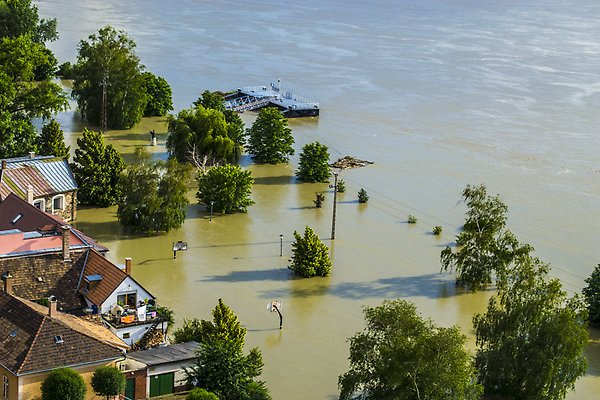
High pressure microfluidics for environmental analyses

High pressure analytical chemistry is used for detecting chemical hazards in environmental chemistry. Today, such analyses are made at central laboratories and personnel needs to taker sample, administrate them and wait for results from the central laboratory. We intend to build technology that enables portable analytical systems suitable for environmental monitoring. This will ease decision making, allow for more samples to be tested and reduced samples to be validated at central laboratories. Examples of use are leaching of heavy metals and arsenide from deposits or contaminated grounds in flooding.
- Duration of the project: 2018 - 2023
- Funding: CNDS, Kamprad Fam. Foundation, Faculty funding
- Involved people: Simon Södergren, Karolina Svensson, Klas Hjort (UU)
ERC project hydrosocialextremes: unraveling the mutual shaping of hydrological extremes and society
Droughts and floods affect more than 100 million people per year, and cause thousands fatalities and dramatic losses. Humans respond and adapt to the impacts of floods and droughts, while influencing (deliberately or not) their frequency, magnitude and spatial distribution. The dynamics resulting from this interplay, i.e. both response and influence, remain still poorly understood, and current risk assessment methods do not explicitly account for them. Thus, while risk reduction strategies built on these methods can work in the short-term, they can generate unintended consequences in the long-term. HydroSocialExtremes aims to unravel the mutual shaping of society and hydrological extremes, and develop new methods for planning risk reduction measures.
- Duration of the project: 2018-2023
- Funding: 20 Million SEK (European Research Council Consolidator Grant)
- People involved: Giuliano Di Baldassarre (PI, UU), Frederike Albrecht (SEDU), Hannah Cloke (UoR), Sara Lindersson (UU), Maurizio Mazzoleni (VU), Tamara Michaelis, Elena Mondino (UU), Johanna Mård (UU), Vincent Odongo (SEI), Elena Ridolfi, Maria Rusca, Elisa Savelli (UU)

The transformative potential of extreme weather events: triggers for disaster risk reduction and development [TRAMPOLINE]
Extreme weather events inflict major losses and disproportionally affect lower income countries, yet conditions for accelerating implementation of public policy for disaster risk reduction (DRR) are poorly understood. The TRAMPOLINE project aims to investigate extreme hazard events as potential triggers for changes in DRR policy and development. Utilizing data on DRR policy from 2007-2018, a new dataset of climate extremes and disasters, interviews, and public sources, the project documented the extent to which these events prompt policy change worldwide and assessed whether variations can be explained by income-levels, event magnitude, regular exposure, diffusion effects, agenda-setting, political mobilization, and learning.
- Duration of the project: 2020-2022
- Funding: 4.5 Million SEK (Swedish Research Council)
- People involved: Daniel Nohrstedt (PI, UU), Charles Parker (Co-PI, UU), Giuliano Di Baldassarre (Co-PI, UU), Maurizio Mazzoleni (VU), Elena Mondino (UU) and Jacob Hileman (UU)
Uppsala University website
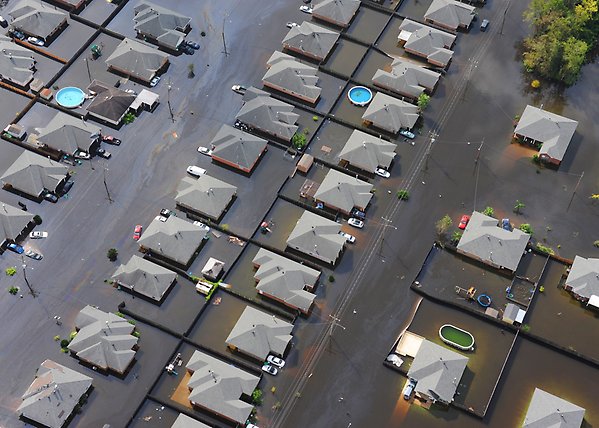
Improved reliability and survivability of mechanical wave energy subsystems

Offshore renewable energy, in terms of offshore wind, wave, and tidal energy, is expected to become an important contribution to the future sustainable and fossil-free energy system. Whereas offshore wind turbines are being installed at shallow water depths at a rapid speed around the world, floating offshore wind, wave, and tidal energy are less mature technologies. Ensuring reliability for these systems still poses a challenge, in particular during storms and other extreme weather events. In this project, extreme offshore wave conditions are identified, and survivability and resilience of wave energy converters in these conditions is studied using numerical and experimental methods.
- Duration of the project: 2019-2022
- Funding: 5 M SEK (the Swedish Energy Authority)
- People involved: Malin Göteman (PI, UU), Eirini Katsidoniotaki (UU), Jens Engström (UU), Anna Rutgersson (UU), Erik Nilsson (UU), Zahra Shahroozi (UU), Claes Eskilsson (RISE), Pär Johannesson (RISE), Johannes Palm (Chalmers/Sigma Energy & Marine), Edward Ransley (University of Plymouth, UK), and more.
Extreme events in the coastal zone – a multidisciplinary approach for better preparedness
The overarching scientific questions to be addressed in this project were: To what extent does climate change alter the occurrence of extreme events, including storms, storm surges as well as heavy precipitation, and the severity of their impacts in the coastal zone; how can improved modelling lead to better preparedness, help mitigate consequences to society, and to understand key uncertainties; and what is the most effective method of communicating these risks to society?
- Duration of the project: 2018-2022
- Funding: 9.5 Million SEK (The Swedish Research Council Formas)
- People involved: Anna Rutgersson (PI, UU), Martin Drews (co-PI, DTU), Pasha Karami (co-PI, SMHI), Erik Nilsson (UU), Johanna Mård (UU-CNDS), Waheed Iqbal (UU), Elin Andree (DTU), Linus Wrang (UU-CNDS), Kevin Dubois (UU), Kiri Campbell, Ole Kleinschmidt (DTU)
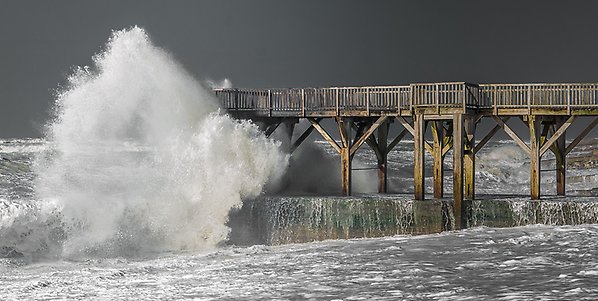
Resilience in Sweden: governing, social networks and learning

The project studied how society can handle the impacts of a changing climate and remain resilient. Resilient here meaning an ability to retain steering and control and society's vital functions. The research contributed to societal utility by increasing the knowledge and understanding of societal resilience, but also through concrete and practical advice on what actions that is needed in terms of changed or reformed legislation, decision making processes, models of collaboration, and organizational structures.
- Duration of the project: 2018-2022
- Funding: Swedish Civil Contincencies Agency (MSB)
- People involved: Mikael Granberg (PI, KaU), Lars Nyberg (KaU)
More information in Karlstad University website
Atmospheric rivers - key features for understanding extreme hydrometeorological events
Atmospheric rivers are long narrow bands of large integrated water vapor transport in the troposphere. At land fall they are usually associated with extreme conditions in terms of wind and precipitation. There is a growing interest in atmospheric rivers, concerning their regional impacts on water availability, the modulation by climate variability and their representation in weather and forecast models. Air-sea interaction processes are major modulators, (i) in the source area over the large oceans and by (ii) coastal processes at land fall. How atmospheric rivers interact with surface conditions and coastal features is to a large extent unknown. The ultimate goal of the project is to quantify the importance of air-sea interaction on atmospheric rivers for better prediction of extreme events in the coastal zone.
- Duration of the project: 2018-2021
- Funding: 3.2 Million SEK (Swedish Research Council)
- People involved: Anna Rutgersson (PI, UU), Danqin Ren, Venu Thandlam, Lichuan Wu (UU)

Swedish pluvial modelling analysis and safety handling (SPLASH)

Centre for Societal Risk Research (CSR) led this interdisciplinary research project on disaster modeling, focusing on flood risks in close collaboration with four companies. The project had three main objectives:
(i) To develop methods for disaster modelling, including descriptions of precipitation, exposure and potential damage
(ii) To develop a secure method for managing insurance data on flood damage in order to better understand the relationship between precipitation and damage
(iii) The establishment of an arena for cooperation between academia, insurance trade association, and authorities in the blue light sector in order to reduce disaster risk in Sweden on a long-term basis.
The work contributed to a better picture of the incurred costs in the event of heavy precipitation, which is needed for effective long-term prevention work. The project used Jönköping as a case study to conduct analyses of events and future risks.
- Duration of the project: 2018-2019
- Funding: 3.4 Million SEK (The Knowledge Foundation)
- Involved people: Lars Nyberg (PI, KaU-CNDS), Sven Halldin (UU), Jan Haas (KaU), Barbara Blumenthal (KaU), Thomas Gell (Brandskyddsföreningen Restvärderäddning), Daniel Knös (JLT Re Northern Europe), Jonas Ander (Länsförsäkringar Jönköping), Pär Holmgren (Länsförsäkringar Alliance)
More information in Karldstad University website (in Swedish)
